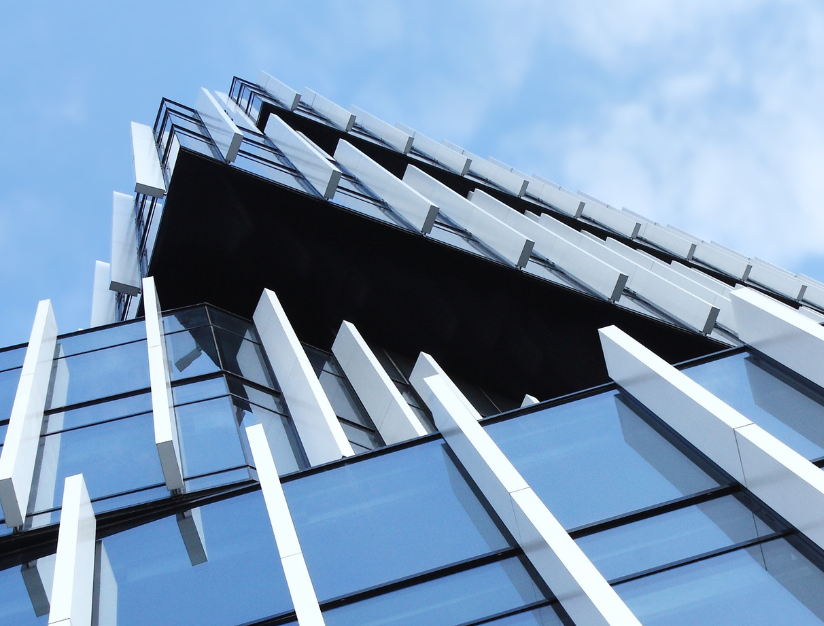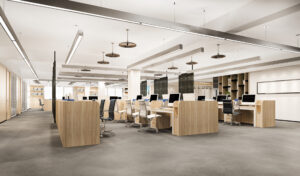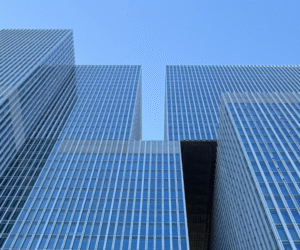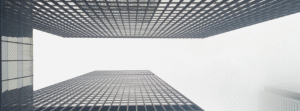in-building cellular coverage: why does the signal disappear?
poor indoor reception isn’t about “losing bars” but about physics and architecture. See why your building acts like a Faraday cage—and what you can do about it.

Have you ever found yourself anxiously pacing the office searching for a single bar of signal to send an important email? Or perhaps a crucial client call was dropped at the most critical moment, right after you stepped into a new building? This is a frustrating and increasingly common phenomenon. In an era where constant connectivity is the lifeblood of business and private life, poor in-building cellular coverage is no longer just an inconvenience – it’s a significant barrier.
Many people blame mobile operators for this state of affairs. The truth, however, is far more complex and fascinating. It lies at the intersection of radio wave physics and modern architecture. Our buildings, designed for energy efficiency and security, have unwittingly become fortresses that effectively suppress cellular signals.
This article is a deep dive into the heart of the problem. We will exhaustively explain why your smartphone “dislikes” buildings. We will expose all the physical phenomena responsible for every dropped call and failed connection. The goal is to achieve a complete understanding of the challenge, because only a thorough diagnosis enables effective action.
the era of hyper-connectivity: why excellent indoor coverage is critical today
Before we delve into physics, it is essential to understand why this issue has escalated from an annoying inconvenience to a strategic challenge for business and daily operations.
- new work models and business continuity: remote and hybrid work are now standard. Offices and homes must provide reliable connectivity. A weak cellular signal poses a real risk to business continuity, leading to lost productivity and communication problems with clients. This applies not only to calls but also to accessing cloud data, CRM systems, and business applications when Wi-Fi fails or is unavailable.
- property value and tenant satisfaction: in today’s world, reliable cellular coverage is considered the fourth essential utility, alongside water, electricity, and heating. Commercial and residential buildings with chronic coverage issues are losing their appeal. Prospective tenants, both corporate and private, increasingly verify signal quality before signing a lease. Poor coverage can decrease property value and lead to tenant turnover.
- the 5G and internet of things (IoT) paradox: the 5G network promises a revolution—gigabit speeds and minimal latency that will drive the development of smart buildings, autonomous vehicles in warehouses, and advanced telemedicine. However, there’s a catch: the highest 5G speeds are achieved on very high-frequency waves (so-called millimetre waves). Their disadvantage is an extremely poor ability to penetrate physical obstacles. This means that the rollout of 5G will further exacerbate the problem of in-building coverage. Without the proper indoor infrastructure, the promises of 5G will remain outside the door.
- public safety and emergency procedures: in crises, from a fire to a medical emergency, the ability to make an emergency call from anywhere in a building—including the underground garage, elevator, or stairwell—is absolutely fundamental. A weak signal is a real threat to human safety.
- customer experience: in hotels, shopping malls, restaurants, stadiums, and medical facilities, customers and guests expect constant, seamless connectivity. The inability to share a photo on social media, check reviews, or contact friends generates negative experiences that directly impact an establishment’s reputation and revenue.
the culprits: building materials that block cellular signals
A cellular signal is a radio wave. Its strength is measured in decibels relative to one milliwatt (dBm). This scale is logarithmic, which means even a small change in the dBm value has a significant impact:
- -60 to -80 dBm: excellent signal (full bars).
- -81 to -95 dBm: good, stable signal (3-4 bars).
- -96 to -110 dBm: weak, unstable signal (1-2 bars), possible data issues.
- -111 to -120 dBm: very weak signal, calls may be dropped.
- Below -120 dBm: dead zone, no service.
It is crucial to understand that every 3 dB of loss means the signal power is halved! A 10 dB loss equates to a 90% reduction in power. Now, let’s examine how specific building materials affect these values.
attenuation: a gallery of “silent killers” of the signal
Attenuation is the absorption of radio wave energy by a material. It is the primary reason why the signal weakens upon entering a building.
- concrete and reinforced concrete (loss: -10 to -30 dB) this is the most common and one of the worst materials for radio waves. Its density and chemical composition effectively absorb energy. The situation is dramatically worsened by steel reinforcement (rebar). The dense grid of metal bars inside the concrete acts as a screen, further reflecting and scattering any signal that manages to penetrate the wall’s structure. Thick, multi-layered foundation walls or ceilings in underground garages present an almost insurmountable barrier for the signal.
- metal (loss: -30 to -50 dB) metal is an absolute blocker. Instead of absorbing, it primarily reflects radio waves. Every metal element acts like a mirror.
- steel structures: the skeletons of modern office buildings.
- metal sheet roofs and facades: common in warehouses, industrial halls, and retail markets.
- interior elements: metal suspended ceilings, elevator shafts, metal shelving in archives, and even metal window blinds.
- low-emissivity (low-e) and solar control glass (loss: -15 to -40 dB) this is an insidious signal blocker, characteristic of modern, ecological architecture. To improve a building’s energy balance, glass panes are coated with a microscopic layer of metal oxides. This coating is invisible to the human eye, but for radio waves, it constitutes a barrier comparable to a thin metal sheet. As a result, a building with a fully glazed facade can have worse indoor coverage than a traditional brick building. This is the so-called “green building paradox”: the more energy-efficient they become, the more hostile they are to wireless communication.
- brick and stone (loss: -5 to -20 dB) these materials are more “transparent” to the signal than concrete, but their impact is still significant, especially in the case of thick, solid walls in older buildings. The density and mineral composition of stone can cause considerable attenuation.
- wood, drywall, and standard glass (loss: -2 to -5 dB) these materials have the least impact on the signal. That’s why coverage problems are much smaller in lightweight frame constructions or with traditional, single-pane windows.
- water and vegetation (variable loss) water is an excellent absorber of radio waves (microwave ovens operate on this principle). Therefore, dense foliage, green roofs, and even human bodies (which consist mostly of water) can attenuate the signal. The coverage in an office full of people may be weaker than in an empty one.
advanced physics in practice: shadows, echoes, and dead zones
Attenuation is only half the story. Even if a signal manages to penetrate a building, its path to your phone is complex and full of pitfalls.
- reflection and multipath propagation a radio signal behaves like light—it reflects off smooth surfaces. Inside a building, a radio wave does not reach the phone via a single, direct path. It arrives as a sum of many copies of itself, reflected off walls, floors, ceilings, furniture, and metal objects. Each of these copies travels a different path, has a different strength, and reaches the phone with a slight delay.
- consequences: the receiver in the phone must perform immense work to assemble all these “echoes” into a single, coherent signal. When the delays are too great (known as “delay spread”), a phenomenon called intersymbol interference occurs, which in practice means data transmission errors and a drastic drop in internet speed, even if the signal bars indicate strong reception.
- interference: constructive and destructive this is a direct result of multipath propagation and the key to understanding why coverage changes from one meter to the next. When two radio waves meet at a single point:
- constructive interference: if the crests of both waves align, they reinforce each other. This creates a “hotspot” with excellent coverage.
- destructive interference: if the crest of one wave meets the trough of another, they cancel each other out. This creates a “null spot” or a “dead zone”—a black hole in coverage where a connection is impossible, even though everything works just half a meter away. It is these micro-zones of interference that sometimes allow you to restore a connection by slightly moving your phone.
- diffraction and scattering
- diffraction: this is the ability of waves to “bend” around the edges of obstacles. It is thanks to diffraction that a signal can partially “bypass” a building or enter through openings like windows and doors. However, this phenomenon is much weaker for higher-frequency waves (used in LTE and 5G).
- scattering: when a radio wave hits an uneven, rough surface (e.g., textured plaster, furniture, plants), it does not reflect in a single direction but scatters into dozens of weaker waves travelling in various directions. This causes further energy loss and “blurs” the main signal.
the Faraday Cage effect: when a building becomes a fortress
Combining all these phenomena, we arrive at the fundamental problem: modern buildings unintentionally act like Faraday Cages. A Faraday Cage is a metallic shield that isolates the interior from external electromagnetic fields. It does not have to be a sealed metal box.
Let’s consider a cross-section of a typical modern facility:
- foundations and underground garage: thick, reinforced concrete walls surrounded by earth—almost zero chance for a signal to penetrate.
- load-bearing structure: a dense grid of rebar in concrete or a steel frame.
- facade: energy-efficient glazing with a metallic (Low-E) coating.
- roof: often covered with metal sheeting or equipped with installations containing metal components.
- interior: elevator shafts, metal ventilation ducts, suspended ceilings, server rooms.
Successive layers of materials repeatedly attenuate a signal attempting to enter the building. What little gets through is then subjected to reflections and scattering, creating a chaotic wave field full of interference “holes.” As a result, the radio conditions in the heart of such a building resemble those of a deep cave, not the centre of a modern city.
understanding the problem is the absolute foundation
As is evident, the causes of in-building cellular coverage problems are complex and multifaceted. It is a complicated interplay between wave physics, material science, and architecture. Simple answers and one-size-fits-all solutions do not exist. Every building is a unique radio ecosystem with its own characteristics of attenuation and reflection. Attempting to solve the problem “blindly” is doomed to failure and can lead to unnecessary costs.
don’t let invisible barriers hinder your business or quality of life!
The only effective way to combat the problem of poor coverage is to perform a precise diagnosis. Before you consider any steps, you must thoroughly understand what is happening with the cellular signal in your specific facility.
we invite you to request a professional cellular signal audit.
Our engineers, equipped with specialised measurement equipment, will conduct a detailed analysis of radio wave propagation on your property.
- We will create precise signal maps (heatmaps) for all operators, identifying “dead zones.”
- We will measure the real attenuation generated by your building’s construction materials.
- We will identify sources of interference and problems arising from multipath signal propagation.
Based on the collected data, we will prepare a comprehensive report that will serve as the foundation for making informed and effective decisions.
Furthermore, a professional audit is not only a step towards solving a problem but also a path to formally certifying the high technological quality of your facility. Based on detailed measurements and analyses, buildings that meet the highest signal quality criteria will receive the on signal Certificate. This is a prestigious distinction that becomes a real asset in the real estate market. The on signal Certificate is a clear indication to tenants and clients that the building offers reliable and modern mobile connectivity, prepared for the challenges of today (LTE) and the future (5G), which directly enhances its value and commercial appeal.



